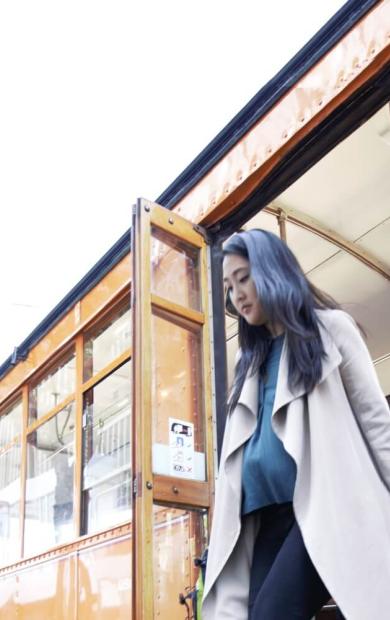
It's time to update SF's climate plan.
We need to cut climate pollution.
What would you like
to see the City do?
What exactly is the Plan?
The San Francisco Climate Action Plan sets out what the City and all San Franciscans can do together to cut the polluting emissions that cause climate change, for a safer, healthier future.
Get Involved
Share your ideas and priorities!
Attend an upcoming event
Email climate@sfgov.org
Learn about the Climate Action Plan and weigh in on the update!
Fill out the form on this pageLearn more about how the Plan works across key sectors.
The 2025 plan is still being updated. Download the full 2021 plan below.

Energy Supply
Overview: San Francisco must transition away from fossil fuels to 100% renewable electricity for buildings and vehicles. To get there, new planning and investments will be needed to ensure affordable, reliable electricity.
2021 Goals: By 2025, residents and businesses are supplied with 100% renewable electricity that is reliable and affordable.
2021 Strategies: Expand renewable electricity capacity; prepare for the change in electricity demand; provide equitable rates and programs for low-income households; develop and support the clean-energy workforce.

Building Operations
Overview: Over time, buildings must get off natural gas and switch to clean, renewable electricity. Property owners will need education and financial help, and tenants and low-income residents must be protected from excessive rent increases and displacement risks. The transition will mean training needs and offer new job opportunities.
2021 Goals: Eliminate emissions from all buildings by 2040 through electrification and using 100% renewable electricity.
2021 Strategies: Electrify existing buildings; provide education and financial incentives; create a diverse and skilled workforce.

Transportation and Land Use
Overview: The transportation system needs to offer safe, reliable, sustainable travel options and reduce peoples’ reliance on cars to meet their daily needs. Cars will need to be electric, using 100% renewable electricity. Achieving this will require ongoing public engagement, funding, and coordinated planning.
2021 Goals: By 2030, 80% of all trips are low-carbon (e.g., transit, walking, biking). By 2040, all new registered private vehicles are electric.
2021 Strategies: Make local and regional transit more efficient to increase ridership; build out active transportation networks; align parking management and pricing with climate goals; locate growth near transit corridors; switch to zero-emissions vehicles of all types.

Housing and Land Use
Overview: Creating more homes for people of all income levels, in walkable neighborhoods near transit and jobs, is essential to reducing emissions from driving, while making San Francisco a more equitable, livable city.
2021 Goals: Build at least 5,000 new housing units per year with maximum affordability, including not less than 30% affordable units, and with an emphasis on retaining and rehabilitating existing housing.
2021 Strategies: Expand housing and stabilization programs, especially for families of color; preserve and rehabilitate existing housing for vulnerable populations; build housing for all income levels in lower-density areas near transit and other services.

Circular Economy
Overview: While San Francisco continues to lead on zero waste through reuse, recycling, and composting efforts, much more can be done to address the total climate impact of products and services produced elsewhere but consumed here.
2021 Goals: Reduce the amount of solid waste generated by 15% by 2030. Cut the amount of waste sent to landfills in half by 2030.
2021 Strategies: Address the life-cycle impacts of buildings and building materials; reduce food waste and embrace plant-rich diets; repair instead of buying new; increase renewable aviation fuels for air travel.

Healthy Ecosystems
Overview: San Francisco’s unique natural habitats are home to many plants and animals. Greening the city, and keeping trees and natural areas healthy, benefits people and wildlife alike.
2021 Goals: Use nature-based solutions to sequester emissions and support biodiversity.
2021 Strategies: Restore natural lands of all types and conserve biodiversity; expand urban forestry and greening; implement regenerative agriculture practices, like spreading compost on rangelands, to sequester carbon from the atmosphere.

Water Supply
Overview: In the face of the challenges brought about by climate change, drought, and other uncertainties, San Francisco will continue conserving water, and maintaining its zero-emission gravity-driven water system, while diversifying its water supplies with innovative sources of water.
2021 Goals: Diversify water-supply options during non-drought and drought periods. Improve use of new water sources and drought management. Maintain a gravity-driven water-delivery system.
2021 Strategies: Invest in and implement supply augmentation programs; continue successful water conservation programs; explore new programs to reduce water use and develop new supplies.
6 Simple Ways to Fight Climate Change
You put the action in the San Francisco Climate Action Plan. The simple changes you make today have a huge impact on our future.*
San Francisco is making a difference.
San Francisco is a leader on climate action. Here are a few recent statistics: